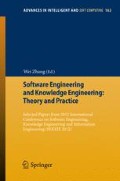Abstract
Based on the classic different simulation models of lightning feedback tunnel-bottom current, a new revised current model is developed to improve the shortcomings of different classic models. And the new model can be used in the kinds of lightning feedback engineering models, which can make the lightning model more complete and can be used in real application.
Access this chapter
Tax calculation will be finalised at checkout
Purchases are for personal use only
Preview
Unable to display preview. Download preview PDF.
References
Narasimhan, S., Nayar, S.: Shedding Light on the Weather. In: Proc. IEEE Conf. Computer Vision and Pettern Recognition, pp. 665–672 (2003)
Hu, W., Cummer, S.A., Lyons, W.A.: Lightning charge moment changes for the initiation of sprites. Geophys. Res. Lett. 29, 1279–1285 (2002)
Franz, R.C., Nemzek, R.J., Winckler, J.R.: Television image of a large electrical discharge above a thunderstorm system. Science 249, 48–51 (1990)
Pasko, V.P., Inan, U.S., Bell, T.F.: Sprites produced by quasielectrostatic heating and ionization in the lower ionosphere. J. Geophys. Res. 102, 4529–4561 (1997)
Pasko, V.P., Inan, U.S., Bell, T.F.: Mesospheric electric field transients due to tropospheric lightning discharges. Geophys. Res. Lett. 26, 1247–1250 (1999)
Taranenko, Y.N., Inan, U.S., Bell, T.F.: Interaction with the lower ionosphere of electromagnetic pulses from lightning: heating, attachment, and ionization. Geophys. Res. Lett. 20, 1539–1542 (1993)
Roussel-Dupré, R.A., Gurevich, A.V.: On runaway breakdown and upward propagating discharges. J. Geophys. Res. 101, 2297–2311 (1996)
Pappert, R.A., Ferguson, J.A.: VLF/ELF mode conversion model calculations for air to air transmission in the earth-ionosphere waveguide. Radio Sci. 21, 551–558 (1986)
Cho, M., Rycroft, M.J.: Computer simulation of the electric field structure and optical emission from cloud-top to the ionosphere. J. Atoms. Terr. Phys. 60, 871–888 (1998)
Veronis, G., Pasko, V.P., Inan, U.S.: Characteristics of mesospheric optical emissions produced by lightning discharges. J. Geophys. Res. 104, 12645–12656 (1999)
Ma, Z., Croskey, C.L., Hale, L.C.: The electrodynamic responses of the atmosphere and ionosphere to the lightning discharge. J. Atoms. Terr. Phys. 60, 845–861 (1998)
Author information
Authors and Affiliations
Corresponding author
Editor information
Editors and Affiliations
Rights and permissions
Copyright information
© 2012 Springer-Verlag GmbH Berlin Heidelberg
About this paper
Cite this paper
Liu, X., Qin, Z. (2012). The Improvement for the Lightning Feedback Current Model and the Application for the Engineer Model. In: Zhang, W. (eds) Software Engineering and Knowledge Engineering: Theory and Practice. Advances in Intelligent and Soft Computing, vol 162. Springer, Berlin, Heidelberg. https://doi.org/10.1007/978-3-642-29455-6_11
Download citation
DOI: https://doi.org/10.1007/978-3-642-29455-6_11
Publisher Name: Springer, Berlin, Heidelberg
Print ISBN: 978-3-642-29454-9
Online ISBN: 978-3-642-29455-6
eBook Packages: EngineeringEngineering (R0)

